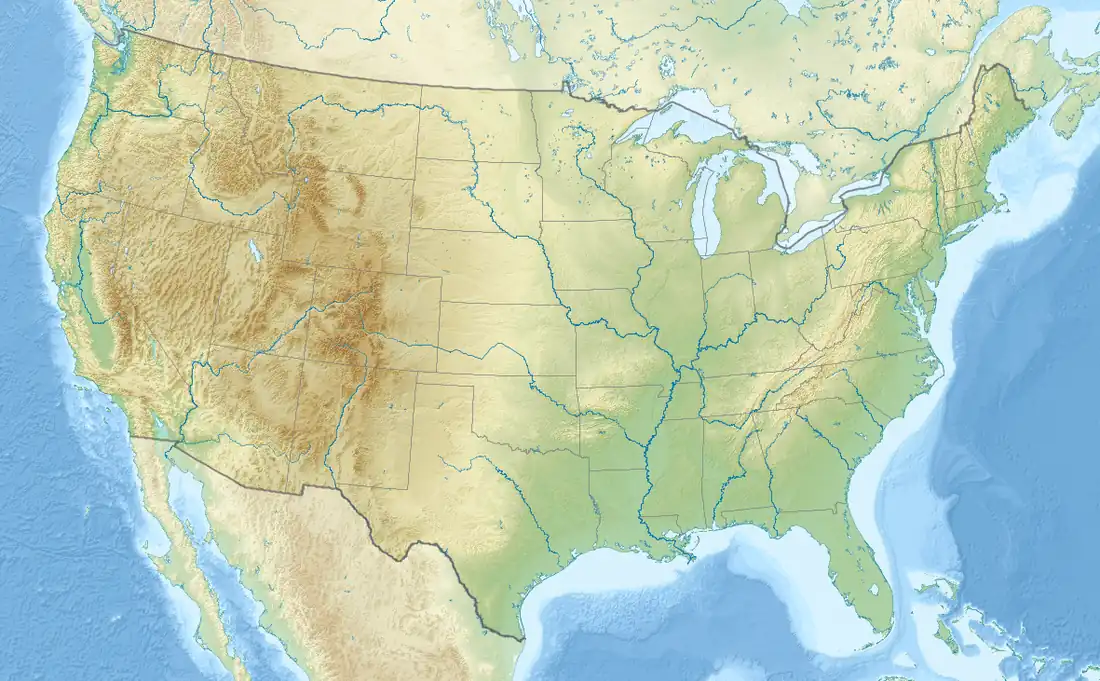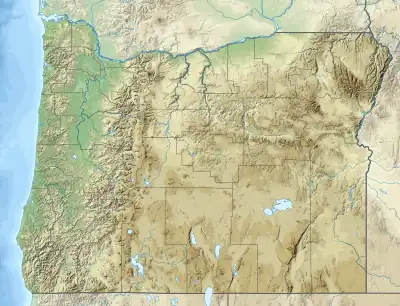| Alkali Canyon Formation | |
|---|---|
| Stratigraphic range: Tortonian-Zanclean (Hemphillian) ~ | |
| Type | Formation |
| Unit of | Dalles Group |
| Lithology | |
| Primary | Sandstone |
| Other | Tuff |
| Location | |
| Coordinates | 45°42′N 120°12′W / 45.7°N 120.2°W |
| Approximate paleocoordinates | 45°36′N 117°30′W / 45.6°N 117.5°W |
| Region | Gilliam & Morrow Counties, Oregon |
| Country | |
| Extent | Eastern Columbia Basin |
| Type section | |
| Named for | Alkali Canyon, 16 km (9.9 mi) SW of Arlington |
| Named by | Farooqui et al. |
| Year defined | 1981 |
 Alkali Canyon Formation (the United States)  Alkali Canyon Formation (Oregon) | |
The Alkali Canyon Formation is a geologic formation in Oregon. It preserves fossils dating back to the Tortonian to Zanclean stages (Hemphillian) of the Neogene period.[1][2]
Fossil content
The following fossils have been recovered from the formation:[1]
- Eucyon davisi
- Hypolagus oregonensis
- Neotamias malloryi
- Oregonomys pebblespringsensis
- Perognathus stevei
- Plesiogulo marshalli
- Pliotaxidea nevadensis
- Scapanus proceridens
- Spermophilus shotwelli
- S. wilsoni
- Castor sp.
- Dipoides sp.
- Mammut sp.
- Megalonyx sp.
- Teleoceras sp.
- Archaeolaginae indet.
- Camelidae indet.
- Canini indet.
- Carnivora indet.
- Cricetidae indet.
- Dipodomyinae indet.
- Equini indet.
- Hipparionini indet.
- Procyonidae indet.
- Sciuridae indet.
- Tayassuinae indet.
- Ursidae indet.
See also
References
Bibliography
- Shotwell, J. A. 1958. Inter-community relationships in Hemphillian (mid-Pliocene) mammals. Ecology 39. 271–282. .
This article is issued from Wikipedia. The text is licensed under Creative Commons - Attribution - Sharealike. Additional terms may apply for the media files.